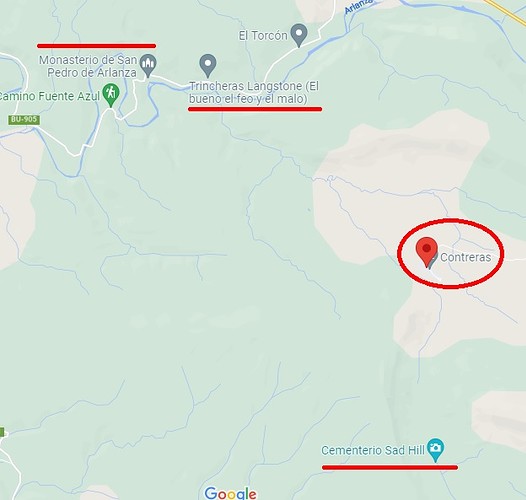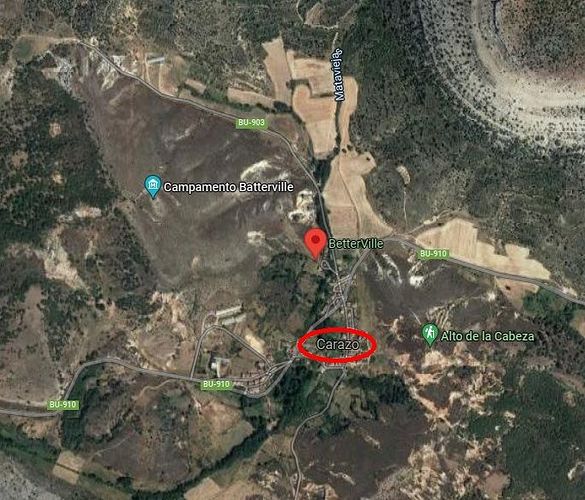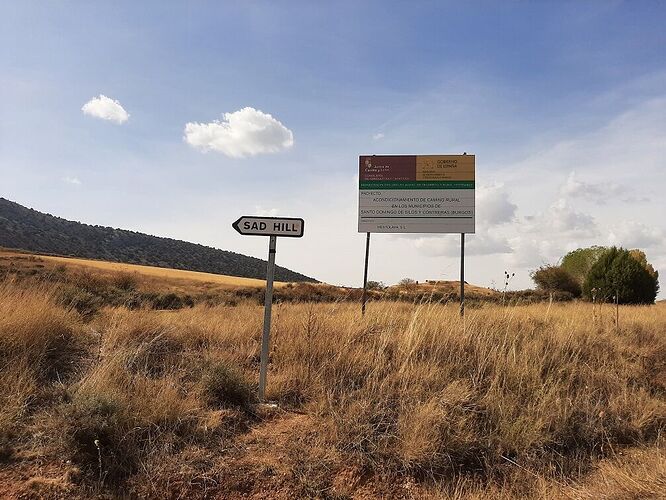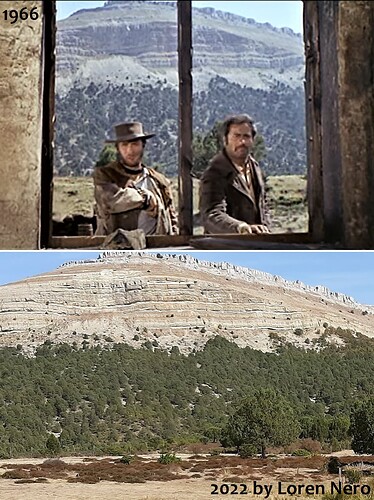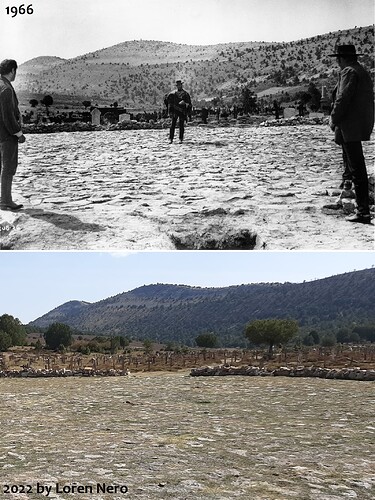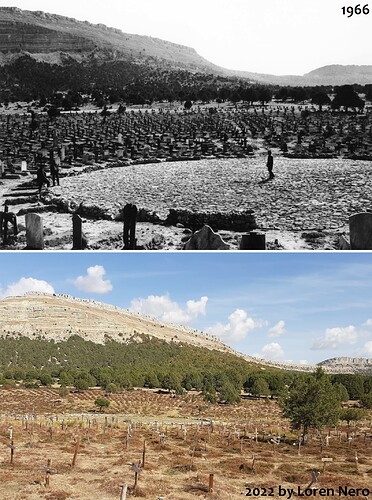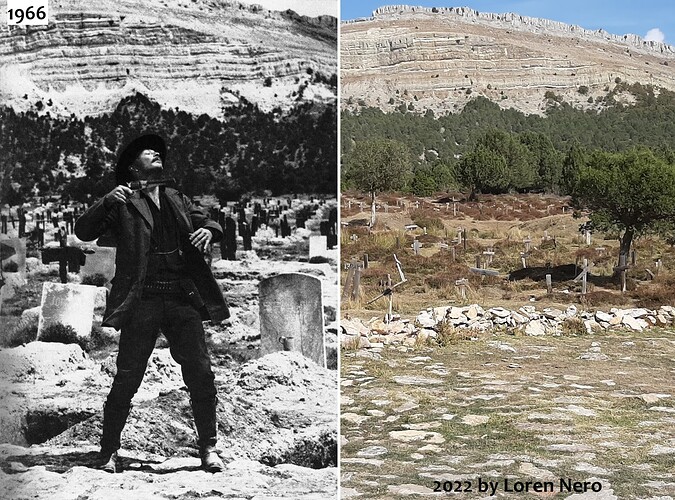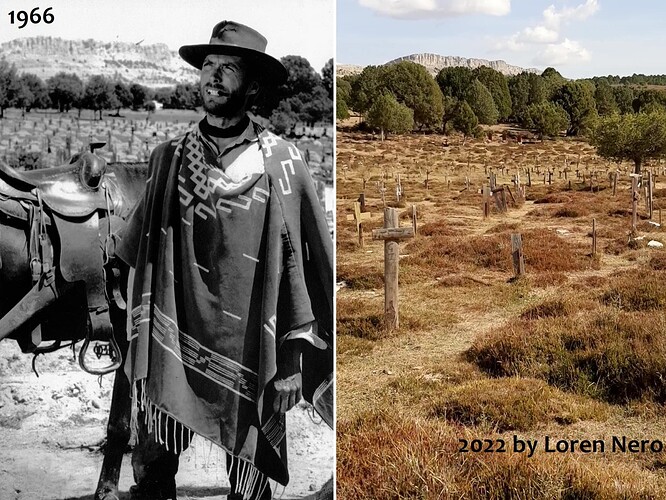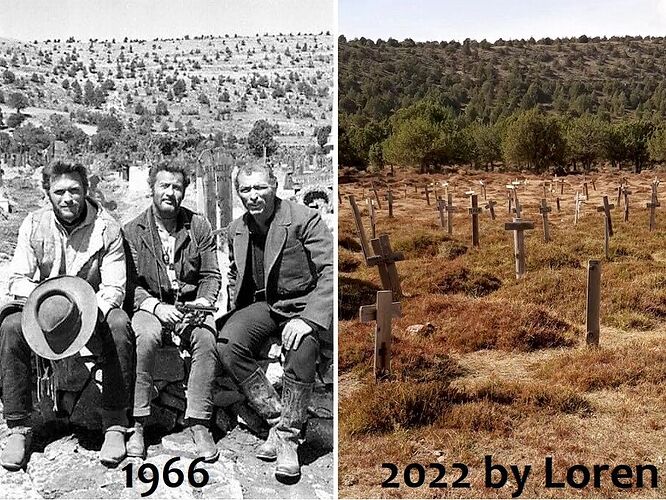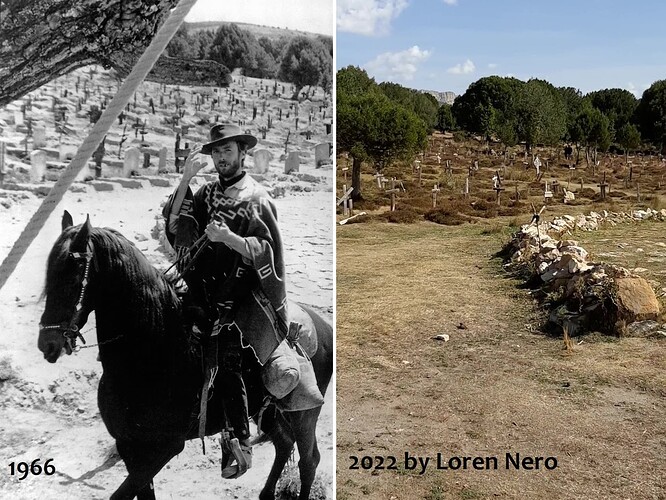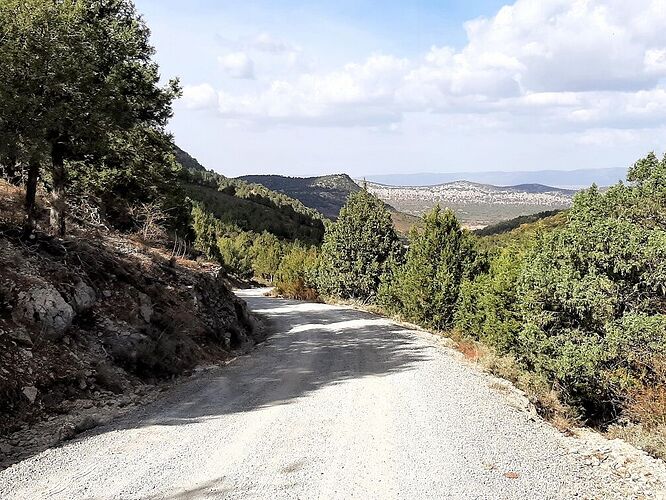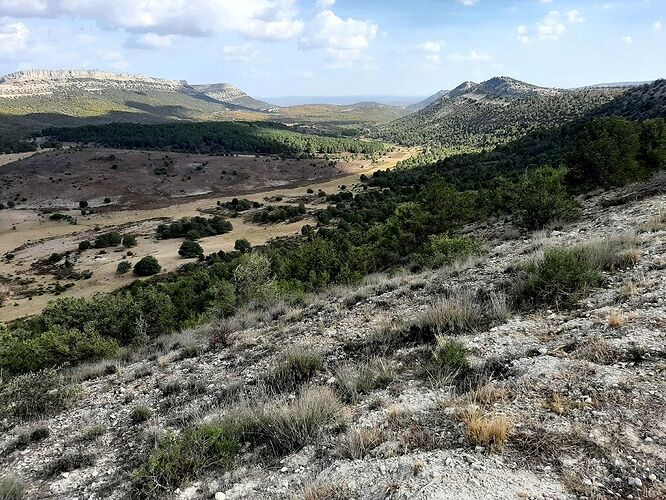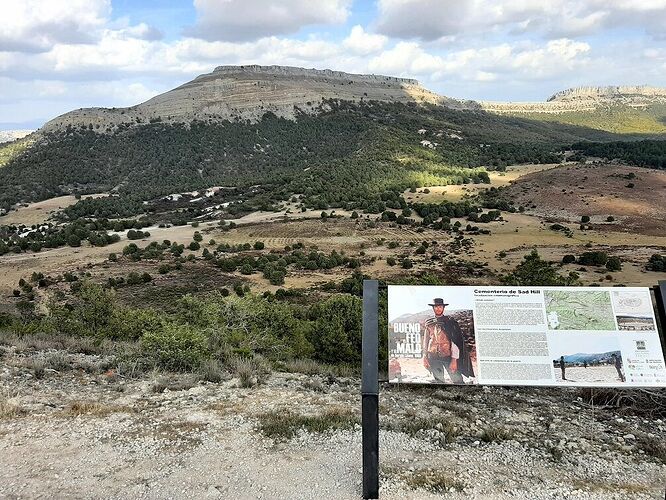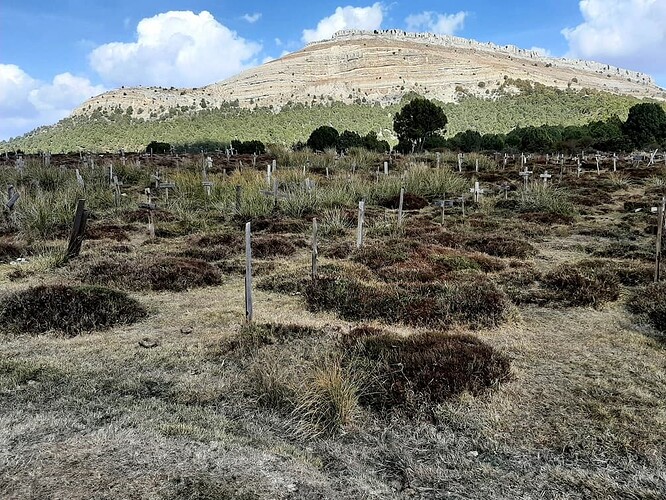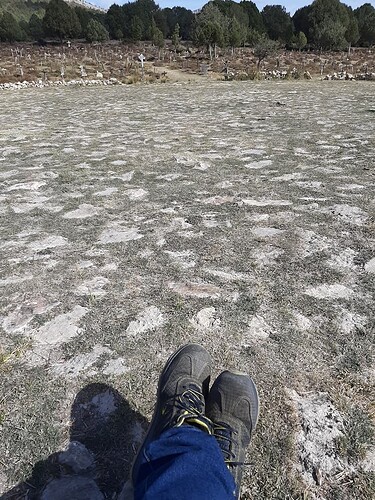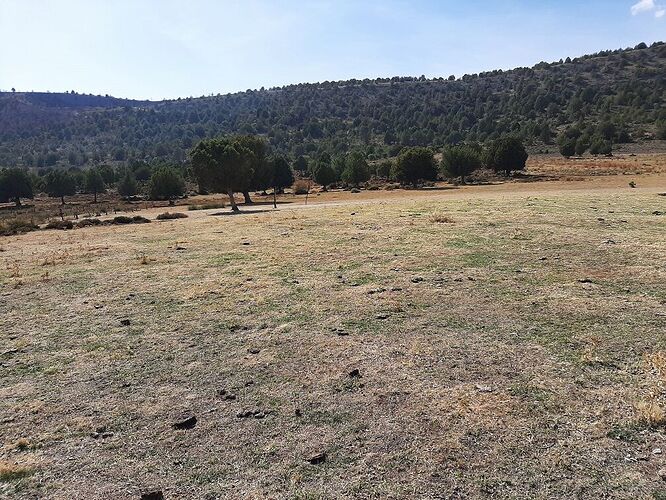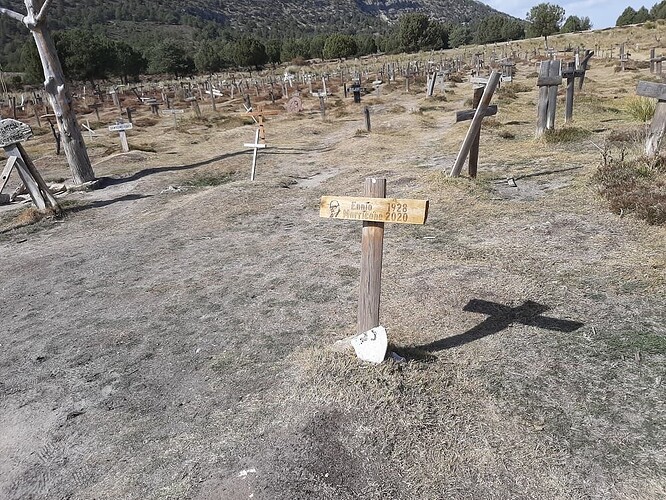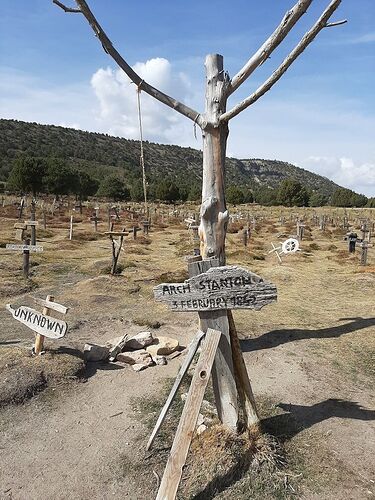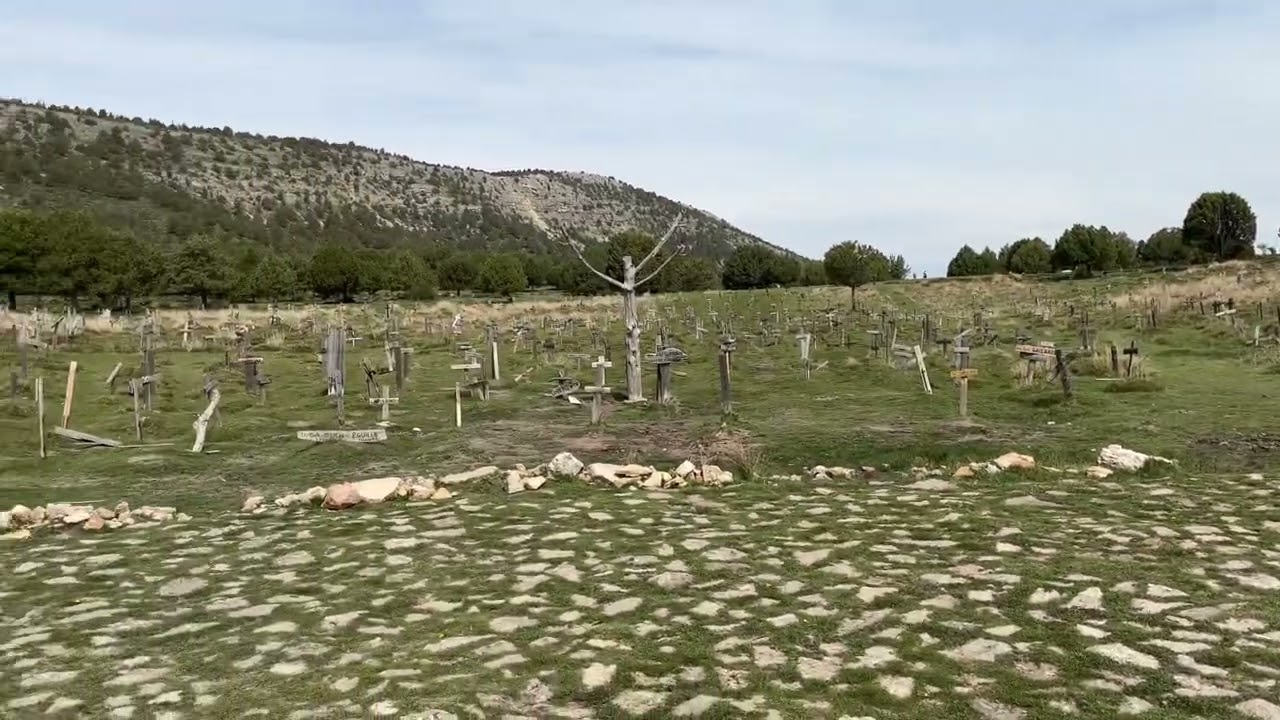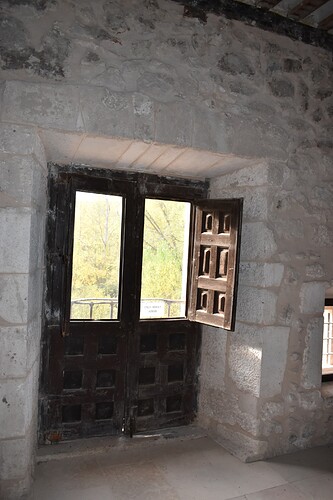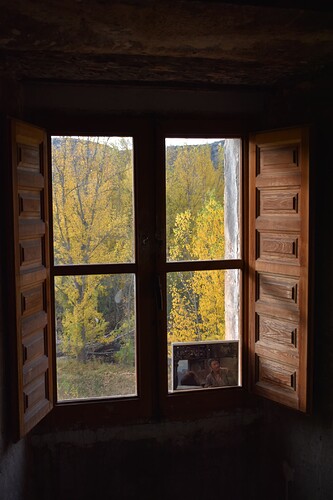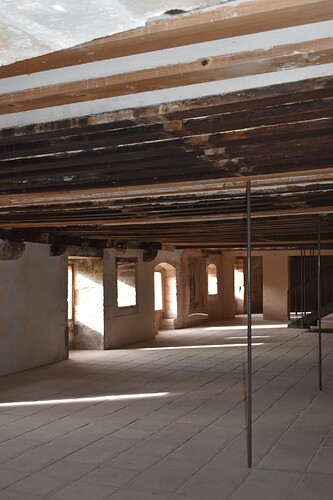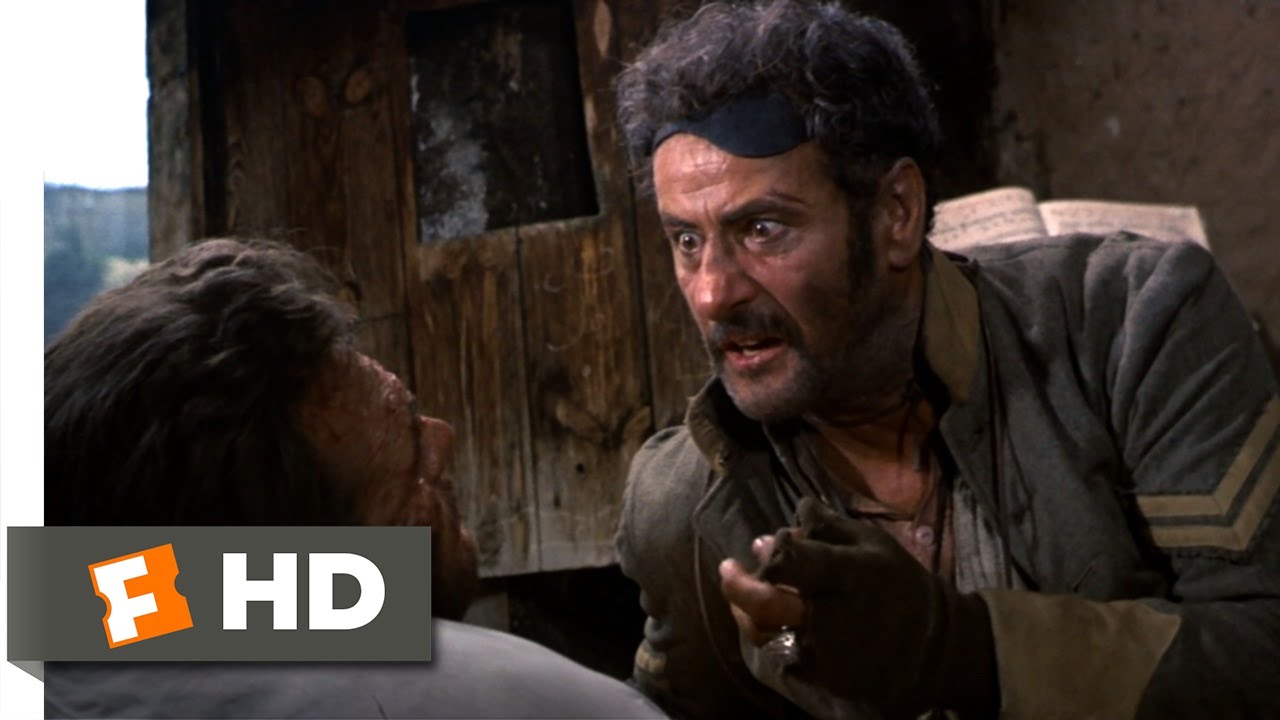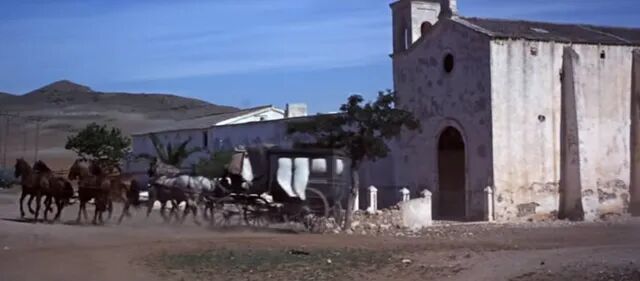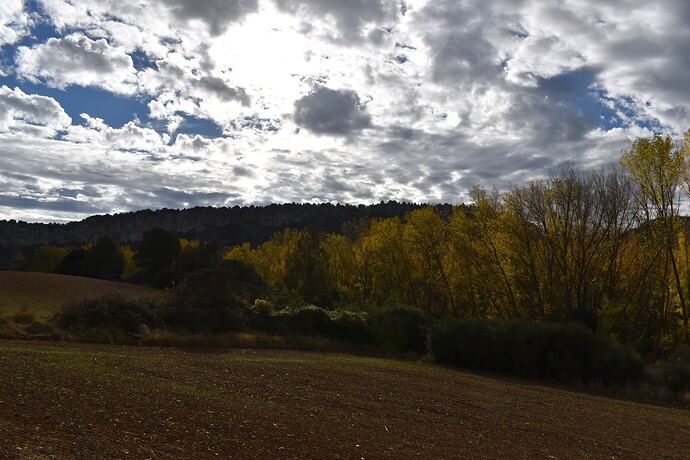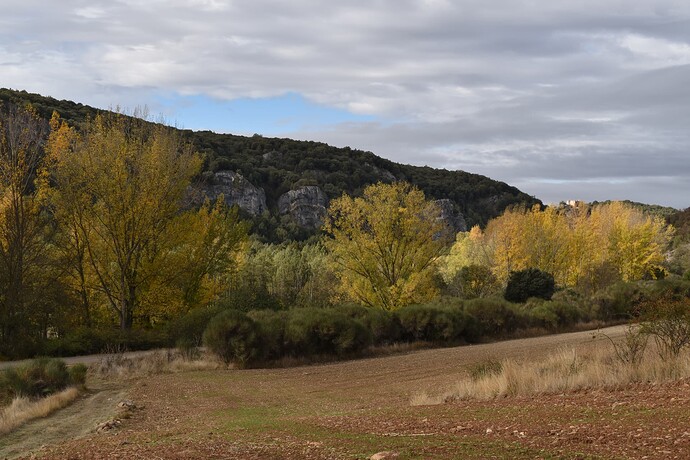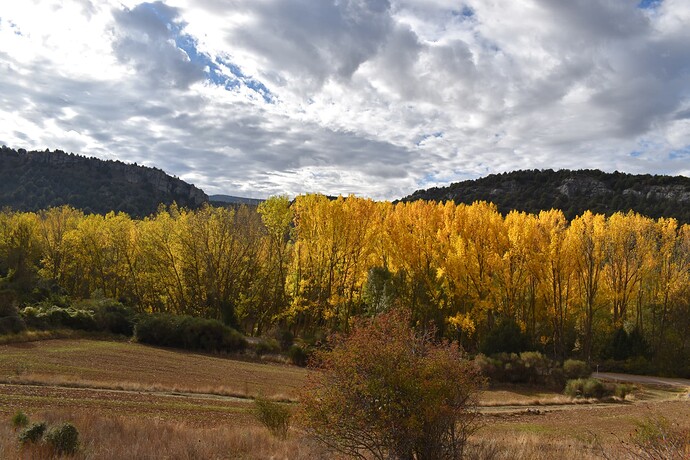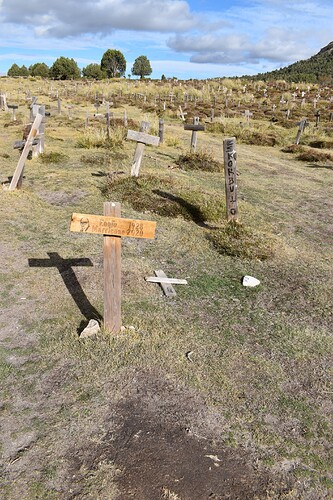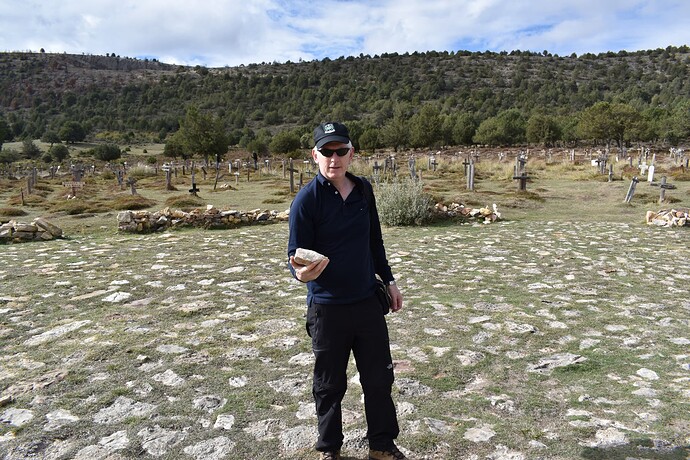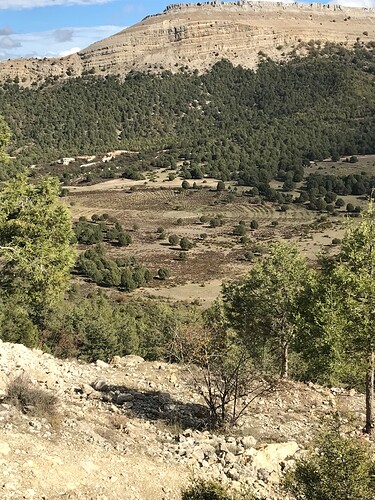SAD HILL CONTINUED
The cheer of relief from Don and Marla as we rounded the corner in that tractor was incredibly satisfying. Marla told me later that when they heard that big old engine in the distance, they just knew that I’d pulled off something spectacular, and that they weren’t going to die out here, eaten by vultures, after all.
Whilst they were waiting, Don had made sure to locate the towing point on the chassis at the back of the car. It was therefore only a matter of moments for the young guy to attach the chain he always carried with him, and haul the car out onto solid, flat ground.
There was a great deal of thanks and handshaking, and Don tried to press some pesetas into the guy’s hands, but he wouldn’t take them. He just smiled and said that it wasn’t necessary, and stepped back. But Don was insistent, and eventually our rescuer just decided it was better to accept the money rather than cause offence.
When we got back in the car, Don says “how much did I give that guy?”
“It was a 10,000, wasn’t it? That’s about £37.50.”
“No, I think I gave him a hundred thousand.”
“They have hundred thousand bills? Jesus, that’s over three hundred quid! Are you sure that’s what you gave him?”
“I think so. I don’t know.”
“Oh well, they’ll probably re-build the village out of that, and erect a statue to you, their generous benefactor.”
Don turned the car around, and I hopped over to the tractor driver to ask him if there was a way we could get to the cemetery. He started going on about “La Carretera Blanca” again, but I couldn’t quite get the gist of where it was, so we left it at that, and I returned to the car. He then set off ahead of us back along the track to Carazo, and we followed him, talking amongst ourselves about the lucky events that got us rescued, and me trying to figure out where to get on to that legendary White Road.
Just as we got to the edge of the woodland, the tractor suddenly lurched off to the right and began to descend a grassy field.
“Uh Oh, what’s he doing? Think he wants us to follow him?” asked Don.
“Oh yeah” I said, suddenly excited about what I had begun to realise was happening. “He’s taking us to the cemetery.”
At the bottom of the grassy hill, the tractor turned right and headed along the valley towards the West. Another track then appeared out of nowhere and entered more woodland. This was much more dense than the place where the car had become stuck, and the low trees met overhead like an archway.
On the other side of the trees, we came up against a deep ditch separating the track from a muddy field. There was a small white pickup truck seemingly abandoned there with it’s back wheels half-way into the ditch.
It was obvious to us that even if we had found this route ourselves, we would not have succeeded in getting any further. because the pickup was blocking the only passable part of the ditch.
“Hey look, Mike, see what he’s doing now”, said Don.
“He’s digging us a road,” Marla added, with mounting astonishment. “Isn’t he just great!”
And sure enough our Seventh Cavalry tractor driver was using the fork on the front of his tractor to push some solid earth into the ditch so we could drive over.
He busied himself at this for several minutes whilst we watched open-mouthed, and then because it didn’t seem to be working the way he wanted, he stopped and tried something else: He turned the tractor round, chained it up to the white pickup, and proceeded to haul it out of the ditch and onto flat ground. This left a narrow track over the ditch, which was now possible to drive over. And whilst he got the tractor ready to haul us over in case we got stuck, Don took the track at the right approach angle, and successfully got over there in one go.
The guy then got in the white pickup, whose keys had surprisingly been left in the ignition, and turning it round, he motioned me to come over and get in the front with him.
“What’s happening Mike?” Don asked again.
“Well it looks like I’m going with him, and you’re following - See you at the cemetery!”
The route our driver followed snaked all over the hillsides. Sometimes there was a track, sometimes just flat grassland. We passed through more woods, and occasionally skirted the edges, and if I was asked to describe how we got there, I’m damned if I could remember it exactly, other than to say that you follow the valley.
As we travelled, I tried to converse with the fellow in my halting Spanish. He didn’t know any English at all, but I managed to find out that the van did not in fact belong to him, but that it was the farmer’s who owned both the land and the cattle that hung around in little groups all over these hillsides. He knew him, so it was okay to borrow the pickup.
I asked him if he remembered THE GOOD THE BAD AND THE UGLY, and he said yes, of course, everyone around here knew the film. And so I asked him if he had worked on it, and he laughed out loud. “Oh No”, he said, “I was only a little boy”. And I laughed too, because he was hardly older than 35, and I keep forgetting that we’re dealing with a 33 year old film here. However, he told me that his father had worked on the picture as a driver. In fact, practically everyone around here was pretty pleased at getting a job out of the movie.
Contreras to Sad Hill, the hard way
Fairly soon we arrived at a sloping area of grassland much like all the others we had passed, and my driver pulled up to a halt and got out of the truck. This was it? All I could see was the grassy valley sloping down to an area covered in low bushes, and some trees to one side, below which a herd of bulls was grazing. In the distance to the right was a large fence, beyond which was a line of trees, and behind me a large white mountain that actually did look just like the one that loomed over Lee Van Cleef in the photograph that I had been clutching in my hand all day.
“Esta aqui - Is it here?”, I asked doubtfully.
“Si, Las tumbas”, the tombs, and he walked forward to the edge of the little flat area where the vehicles were parked and pointed down towards the valley bottom where all the low bushes were.
Well, I couldn’t see anything to get excited about, but Don and Marla had arrived by now, and Don was anxious to know what our guide had said.
“He says this is it”, I offered without much enthusiasm. It seemed to me that we had found somewhat less than we had hoped for; even less than offered by the FOD town of San Miguel - at least there had been foundations in evidence at that location.
“Those Mountains look right - trees over there are possible”, I said as we leafed through the collection of photographs that Don had grabbed from the DVD of the movie.
Don said nothing. He was doing his cool, sceptical performance, revealing nothing about how he felt. I bet he was a great poker player.
Our driver was continuing to do his best to show us things we could not see, so Don said he’d go down and take a closer look, and called back to Marla to get the camera out of the car.
“Will you come back with me, Mike?”, she said.
“Yeah sure”, and that’s when I turned round and suddenly realised that the herd of bulls that we had seen grazing in the distance, had been slowly creeping up on us. By now they had surrounded our hire car and were trying to get into the back of the pickup, where there was a large plastic barrel.
“Oh it’s okay”, the driver was saying, “They think we’ve brought their lunch”, and off he went with Don, down into the valley bottom, leaving me and Marla to brave our way through the bulls to the car.
Well, the driver had said they were safe, so we carefully attempted to move amongst them, and sure enough they were happy to back away from us, rather than us needing to back away from them.
“Actually they’re cows, Mike”, says Marla, and pointed to their underbellies.
Cows with horns? - I think I’ve been a City boy for far too long.
Well, we got the cameras, and I couldn’t resist using the video camera to take a 360 degree pan from inside a bunch of tightly-packed cows that had horns sharp enough to make 'em look like bulls. It was something I didn’t think I’d believe when I got home, unless I saw video proof.
When we got nearer to where Don and the driver were standing, Don’s excitement level had already begun to rise: “Take a look at this, Mike - the stone circle!”
It was strange, but the longer you stood there and looked, the more the place began to take shape. The circular hollow at the bottom of the valley, WAS the stone circle. There was a layer of grass all over it, but you could see the stones. And then you couldn’t look without seeing the stones. It was like a veil being lifted from your eyes.
Yes, finally, we had arrived at Sad Hill. It was just that the momentous nature of our discovery was only slowly beginning to penetrate our consciousness. But one thing that we certainly all knew was that we were going to stay here for quite some time in order to absorb the ambience of such a uniquely beautiful place.
Don was already clicking 35mm film through his camera at about 160 frames a second, and I was trying to light a Toscano against the fair wind that breezed along the valley bottom. But our smiling guide had already stayed too long and apologised that he needed to get back home, so I walked back with him to his pickup. The cows had now moved on, having realised that there was no feed in the plastic barrel for them.
My major thought now was how were we going to find our way out of this valley after our wonderful guide had left?
“Which way do we go?”, I asked “A la izquierda o la derecha - Left or right?” And I stretched out my arms to point in both directions along the valley bottom.
He shook his head, and said something that seemed like: “It doesn’t matter which way you go, left or right.”
Excuse me? You mean it’s just as bad ahead of us as it was back the way we came?
I tried to formulate the question in Spanish: “La carretera a derecha e muy mal, si - the road to the right is very bad?” Meaning the road we had just travelled.
“No, e bueno.”
Oh, that’s a good road? The rutted tracks, the swampy ditches, the dog-track through the woods - that’s a good road?
But whilst he’s telling me this, he’s not pointing back the way we came, he’s actually pointing to the left, ahead of us.
And that’s when I saw it: La carretera blanca - the white road. The unmistakeable gleaming white road beyond the fence at the edge of our field. To the left it climbed steeply up the hillside, and just before the top, suddenly curved back and disappeared over the skyline. To the right it just dipped away into the valley.
“Ah si, La carretera blanca, a la izquierda o la derecha, muy bueno.” The white road was good in both directions was it?.
He smiled in agreement. Then we shook hands, and he returned to the pickup, and with a final wave, slowly drove away on the bad road, the way we had come, the way I never could have remembered to get us out again; whilst ahead of us was a bright white road, which in either direction was going to get us safely out of here. A bright white road, which I now realised was the way we should have come in.
I thought about Professor Frayling for a moment, and wondered if he’d ever actually been here.
We spent the rest of the afternoon at Sad Hill, matching up the frame-grabs, taking photographs of each of us stood in the same positions as the three stars from THE GOOD THE BAD AND THE UGLY. I was definitely going to be Van Cleef, and I knew Don would have to be Clint, so Marla got to be Eli Wallach, “the Ugly”. But that’s okay, because Wallach wasn’t ugly anyway, and for most of us, he stole the picture.
We looked around for the stone that Clint had picked up and on which he had supposedly written the name of the grave that contained the gold.
“Here, this is it”, I said, picking up a useful sized stone, “Take a picture and we’ll post it on the Sergio Leone web page.”
“Is that really it?”
“No, but nobody will know any different.”
Then we set up the video camera and video-taped ourselves walking into position and facing each other down as in the “Triello” showdown. We were laughing and joking and enjoying it so much we were squealing like a bunch of schoolkids.
“Say Mike, you’re looking taller than usual,” Don said to me as we wandered across the undulating landscape away from the stone circle. I had stopped for a moment to get a good camera angle, and now looked to my feet where I appeared to be stood in the middle of some sort of low ground-bush that intermittently covered the valley bottom. But I was slightly raised from the valley floor by about twelve inches.
“Do you see what you’re stood on?”
No.
Then I did.
“See, there’s another one,” Don said, “they’re all over…”
And they were.
I was stood on a grave. A mound of earth which the GBU crew had put there to represent a grave, and where these small bushes had chosen to grow. And now we had seen one grave, we saw all of them: Stretching in all directions in a series of circles around the central stone ring. “Las Tumbas”, as our guide had described them when we had no eyes to see. There were no headstones, no wooden crosses, but the once rich soil that had been placed there to give the impression of a freshly dug grave had attracted these moorland plants, and now every single grave was perfectly marked by them. Sad Hill had for us, had finally come to life again.
Near the central stone circle, we found a shallow, opened grave that we thought could possibly have been the “unknown” next to Arch Stanton. But the tree to which Blondie had attached Tuco’s rope was nowhere to be seen. The only trees still there were the ones that formed a perimeter to the cemetery, and where Blondie stopped before cutting Tuco’s rope that one last time.
On the very edge of the top tier of tombs to the west, we did find some mis-shapen stones that had fallen flat to the grass and had probably been used to represent headstones. One of these was possibly the one against which Tuco had fallen when Blondie used a cannon to shoot his horse from under him, but since we lacked a photograph of this particular detail from the film, we couldn’t be sure whether the correct stone was still there.
Beyond these markers and the perimeter trees, we arrived at a fence, with a cattle grid as a gate, and then came out onto the white road, which unusually, turned out to be constructed from pebble-sized white stones. Moving diagonally to the right, we passed amongst some trees and came out onto a flat promontory. It was here that Blondie comforted the dying soldier with a shared Toscano, but the ruined building was nowhere to be seen. What we did find were two rows of flat concrete blocks slightly curving across the dirt in a North-South direction. We speculated that they might have been used as supports for a camera-track, but it just seemed so unusual that they would have stayed exactly in position for thirty years, whilst the ruined building had been dismantled lock, stock and barrel and spirited away.
On the edge of the promontory, there was a steep drop where some recent excavation had taken place, and which in the film had previously held the wooden barricade around which Blondie and Tuco passed.
Beyond this stretched the wide valley, cut through with the white road that was going to be our way out of here. It probably went all the way to the civil war bridge, but it would be a journey much longer than that which Blondie and Tuco took to get here.
In the late afternoon, just before we left Sad Hill, we took the car across the cattle grid and drove up the white road to the left, where it climbed the hillside. There’s an unlocked gate at the top that you can pass through, but we stopped here just to get some magnificent views back down onto the cemetery, where the low sun now accentuated the tombs by casting their lengthening shadows across the valley.
Then we turned back down the road until we again came to the edge of the cemetery, passing the cattle grid on our right, and now following the white road in the other direction down into the valley for a kilometre or so until we arrived at a little village called Contreras. Here, we found an interesting bar with a Wild Boar’s head framed above the fireplace, and where we quenched our thirst with several cold beers, before finding our way out of here and onto a main road back to Madrid.
Probably the best way to get to Sad Hill Cemetery is pretty obviously not to do what we did on the way in, unless of course you enjoy digging cars out of ruts, or taking very long walks and bumping into bikini-clad women surrounded by Rottweillers. Sad Hill is not near to Carazo as Prof Frayling claims: Carazo is the adventure route, Contreras is the easy way.
Your starting point should be the Monastery of San Pedro De Arlanza whose location has previously been described, and your route is the one that takes you past the Civil War Bridge. Continuing on that road to a point about 7 kilometres after the monastery, you should come to a halt at a T junction. You will notice the town of Hortiguela just to your left, but you should be taking the right turn in order to travel the short distance to Barbadillo Del Mercado, about 4 kilometres from the junction. You have to be careful here, because the signposting is not great, and what you need to be doing is searching amongst the buildings on the right for the lone road that exits the town and pushes south into the mountains.
Once you have discovered this road, you almost immediately cross a railway line, and then an old stone bridge over the river, followed by about six kilometres of winding road that you have to traverse in order to get you to the village of Contreras.
At the T junction, Contreras is on your left, with a signboard pointing straight ahead to where Santo Domingo De Silos lies, another 7 kilometres ahead of you. However, you must now turn left into the village where you carefully wind your way through the narrow streets, making sure not to disturb the sleeping dogs or the ageing card players with their table and chairs strewn in the shade of a building opposite the main bar, until the short stretch of comfortable tarmac suddenly gives way to the lumpy surface of the legendary white road - La carretera blanca.
This is a remarkable construction: a striking white slash glistening brightly in the sun as it cuts it’s way through the valley, clinging perilously to the sides of the sloping hills, and pushing its way inexorably towards the GBU cemetery. What gives it it’s unusual colour is the use of local white stone crushed down to a pebble-sized rubble, which makes it a rather rough and noisy ride.
It is open to speculation as to whether or not this road was actually constructed to enable Leone and his crew to easily get to this otherwise inaccessible location, but certainly the whiteness of the surface gives it a fresh and very recently constructed look that contrasts starkly with the more prevalent ancient goat-tracks that pass for major routes in other parts of this country.
About a kilometre from Contreras where the road becomes more steep, you pass a decorated fountain on your right. Then, a kilometre later, the road flattens out onto a gently sloping valley ringed by those familiar white mountains, before taking a sharp curve to the right. But by now, you should have stopped and leapt out of the car open-mouthed, for ahead of you, beyond a barb-wire cattle fence is SAD HILL Cemetery. And behind you, looking back, you now realise that you have just passed through the valley seen behind Blondie and Tuco as they arrive at Sad Hill and find the dying soldier.
Of course, nobody has to go through this kind of adventure any more, Sad Hill is on google, there’s a gateway marker and a silhouette of Clint, and a load of enthusiasts have spent an age restoring it back to being better than it was. So I guess you just follow the signs. Personally, I’m glad we did it our way 
Here is the google satellite picture of the amazingly uber-restored Sad Hill Cemetery
The map here shows just how close were some of Leone’s locations.


